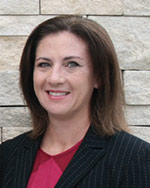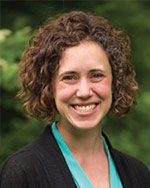Approaching the issue of rural social isolation
 Jennifer Franklin, RN, BSN  Carrie Henning-Smith, PhD, MPH, MSW |
A farmer who stays cooped up at home, a veteran struggling to find work, a parent overwhelmed by caregiving duties, an older woman with no family or friends nearby or who can no longer drive into town — loneliness can have a serious impact on health and quality of life, with the strongest evidence in the everyday stories of rural people. A growing body of research suggests an alarming trend in the health risks associated with social isolation in both urban and rural America.
The effects of rising stress levels, loneliness, depression, and despair can be exacerbated by rural hardships and a geographical dearth of resources. This complex problem requires open-minded, unconventional solutions. From ad-hoc, online communities to creative grant funding, health care providers and rural residents can address the stigma of social isolation and depression.
Scope of the problem
Carrie Henning-Smith, PhD, University of Minnesota Rural Health Research Center deputy director and coauthor of a recent study on rural isolation in NRHA’s Journal of Rural Health, has studied the toll social isolation takes on individuals and communities. “We’ve seen some compelling research come out in the past few years showing the extent of the problem,” Henning-Smith says.
In fact, the issue is often is more far-reaching than many people realize. A 2017 study published by the AARP Public Policy Institute showed social isolation and its related health implications cost the Medicare program $6.7 billion annually in additional federal spending. “Being socially isolated has been associated with Alzheimer’s disease, poor immune system, increased blood pressure and heart disease, increased stress, substance abuse, depression, and suicide,” Henning-Smith says. “In fact, the research suggests that social isolation can be just as risky for your health as smoking 15 cigarettes a day.”
To understand the scope of the problem, Henning-Smith’s team used data examining older adults in rural and urban areas, comparing the two populations for prevalence of social isolation. “We found that about 25 percent of older adults were socializing with other people less than once a month, and this result was the same across the board in rural and urban areas,” Henning-Smith says. “For those whose social experiences are so few and far between that they are meeting with other people less than one time per month, we know there are enormous health implications.” The next phase of Henning-Smith’s work focuses specifically on people living alone in rural communities.
Breaking down barriers
“We talk a lot about stigma and stoicism among rural residents,” Henning-Smith says. “There’s pride in being selfreliant, resilient, and resourceful — and for some, there’s a stigma around saying they feel lonely. But we need to recognize how common it is. Most people experience this at some point in their lives. We need to get past the stigma and recognize that it’s normal and healthy to admit feeling lonely and seeking out social interaction.”
In rural areas where residents live farther from one another, public spaces, and resources, factors such as geography, road conditions, and weather can make matters worse. Limited access to broadband internet and cellular activity can make it harder to connect online or reach people. “Practically speaking, it may be harder to organize and communicate about events,” Henning-Smith says.
Changing demographics can also have an enormous impact on isolation. “We’re seeing an aging population in rural areas, with younger people moving out and families living farther from one another than before, making it harder to connect,” Henning-Smith says. “In some areas, immigration brings in new residents in rural communities, and this can be a wonderful and positive thing, but it can be an isolating experience when not all communities are universally welcoming.”
Financial barriers add one more layer of difficulty in addressing health problems related to social isolation. “Many folks can’t afford to drive to access health care and other services, and often elderly people can’t drive themselves and don’t have others they can call on for transportation,” says Jennifer Franklin, RN, Yoakum Community Hospital chief clinical officer. Franklin was involved in launching a successful geriatric psychiatric care model with limited resources in Yoakum, Texas.
Rural communities’ limited access to resources creates challenges with declining health care access, hospitals, and services for residents. “All of this makes it uniquely challenging to address social isolation in rural communities,” Henning-Smith says.
Innovative solutions
Some of the best solutions use a creative or unexpected approach to addressing social isolation. “The models I find the most promising are the ones with a positive framing that don’t market themselves as programs that address social isolation and loneliness — instead, they focus on simply connecting people. It’s a matter of bringing folks together and reminding folks we need each other,” Henning-Smith says.
It’s possible to make a big difference even with a relatively small investment of time and resources. Rural communities have a lot to gain by strengthening social ties through initiatives in the following areas:
Accessibility: Systems and structures already in place can be used to promote social activity — sidewalks, parks, public libraries, restaurants, coffee shops, and outdoor activities. The Blue Zones Project is an example of programming focused on building infrastructure to connect older adults. Learn more.
Intergenerational programs: Having an intergenerational component is particularly important in rural communities. “Some of the most successful programs are those that give everyone an opportunity to contribute and provide a sense of self-worth and belonging,” Henning-Smith says. “For example, pairing older adults with students who can help them set up an iPad or get started with FaceTime so they can connect with out-of-town family.” The Northland Foundation’s grassroots program AGE to age is designed to bring together older adults and local youth in northeastern Minnesota. Learn more.
Time banking: Time banking is a type of program where people contribute the skills and talents they have — teaching piano, raking leaves, stuffing envelopes, etc. Whatever amount of time people contribute is “banked” in the program and can be withdrawn for reciprocal help as needed. “The Onion River Exchange is a great example of this,” Henning-Smith says. “I really like this model because it builds community connections and a sense that we’re all in this together.” Learn more.
Social media: The online community #AgTwitter has become a space for farmers to share experiences on manifold issues beyond agriculture, including mental health. “Farmers who tweet on #AgTwitter may initially go there to trade advice on farm equipment but end up finding support from others who have the same medical condition or are dealing with similar challenges in life,” Henning-Smith says. Farmers have organically transformed this community-created space into a forum to discuss environmental and economic factors, work-related stress, and depression. Learn more.
Personal interaction: Maintaining focus on the human element is essential. “Programs such as Meals on Wheels can make a significant impact on a person’s well-being through social interaction,” Franklin says. “If you’re just dropping food off on the doorstep, there’s a missed opportunity. It only takes a few minutes to ring the doorbell, offer a friendly greeting, or pause for a brief conversation. Taking this approach and incorporating the human element can greatly increase the success of programs aimed at improving social determinants of health.” Learn more.
Reaching at-risk older adults
Yoakum Community Hospital, a 25-bed critical access hospital in rural South Central Texas, developed an innovative psychiatric treatment model for older adults facing emotional difficulties including trauma, posttraumatic stress disorder (PTSD), and depression.
“We noticed a pattern of older adults were coming through the ER repeatedly with medical conditions on top of underlying behavioral issues related to loneliness, depression, and trauma,” Franklin recalls. “We started searching for solutions, and the eye-opener was seeing how treating depression and other behavioral issues made it easier to manage other medical problems.”
The New Horizons program has been effective in helping geriatric psychiatric patients regain their health and stability in a protective, nurturing, and compassionate environment. “Our plan demonstrates that a small, critical access hospital, equipped with a skilled clinical team that includes a therapist and an expert psychiatrist, can successfully treat certain types of patients in a local setting,” Franklin says.
The local aspect of the program is a secret to its success. “Patients form relationships with local professionals they know and trust during and after recovery,” Franklin says. “This makes a significant difference in getting people to follow through with treatment. For example, national incidents of no-shows for psychiatric visits is close to 30 percent; in our program it’s less than 10 percent. Our patients meet their team in the hospital and they are greeted by the same friendly faces in the clinic. We go the extra mile to make sure patients are showing up for therapy — and if they’re not, we go find them.”
The outcomes show significant improvement in depression and PTSD. “We had 150 patients recording depression improvement from admission to discharge, which is significant compared to nationally recorded numbers for depression treatment. This demonstrates the value in delivering clinically effective psychological results in a small, local hospital setting,” Franklin says.
But the most valuable data is in the stories of each patient behind the numbers. When patients are able to manage behavioral health issues, they are better able to take care of their physical health. Many patients see the benefits of lower blood pressure, losing weight, taking fewer medications, controlling their diabetes, and other improvements to their health.
The New Horizons program has not only delivered positive patient outcomes, but it has proved to be financially sustainable. The payment model is based on Medicare, Medicaid, and commercial insurance reimbursement; assistance is available for patients without traditional insurance coverage.
“When you have the right pieces in place, behavioral health care is one service line that rural communities can provide better than urban. It doesn’t require technology — you don’t need millions of dollars in equipment. The key is making a connection to the patient, and we already have that in our community. It’s something rural hospitals do very well,” Franklin says.
Sharing solutions
“As we learn more about the problem of social isolation, it’s clear that we all have a role to play. Every single person can and should be an active member of their community,” Henning-Smith says. It can be as simple as reaching out to someone and having a meaningful conversation, getting to know neighbors, showing up for events, and being present in public life.
In health care, it’s important to ask questions, screen people for mental health concerns, and make sure resources and programs for patients exist. “It’s not up to health care providers to solve this, but getting them involved and making sure they are part of the conversation is really important,” Franklin says. “Talking more about loneliness and depression in the clinical setting can help reduce stigma and make it easier to have these conversations.”
Collaboration is key, with intentional planning that includes the school system, public health, the business community, health care, and other stakeholders in the community. “The more people talk about this, the more we will reduce some of the stigma around it,” Henning-Smith adds. “We have to make it OK for those who feel lonely or isolated to reach out for help.”
